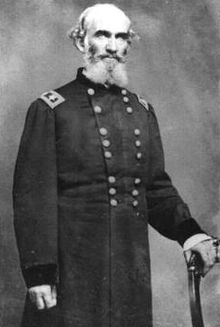
William Woods Averell was a career United States Army officer and a cavalry general in the American Civil War. He was the only Union general to achieve a major victory against the Confederates in the Valley Campaigns of 1864 prior to the arrival of Philip Sheridan, at the Battle of Rutherford's (Carter's) Farm and at the Battle of Moorefield.

James Harrison Wilson was an American military officer, topographic engineer and a Major General in the Union Army during the American Civil War. He initially served as an aide to Major General George B. McClellan during the Maryland Campaign before joining Major General Ulysses S. Grant's army in the Western Theater, where he was promoted to brigadier general. In 1864, he transferred from engineering to the cavalry, where he displayed notable leadership in many engagements of the Overland Campaign. However, his attempt to destroy Lee’s supply lines failed when he was routed by a much smaller force of Confederate irregulars.

Francis Channing Barlow was a lawyer, politician, and Union General during the American Civil War.

Wesley Merritt was an American major general who served in the cavalry of the United States Army during the American Civil War, American Indian Wars, and Spanish–American War. Following the latter war, he became the first American Military Governor of the Philippines.

Alfred Pleasonton was a United States Army officer and major general of volunteers in the Union cavalry during the American Civil War. He commanded the Cavalry Corps of the Army of the Potomac during the Gettysburg campaign, including the largest predominantly cavalry battle of the war, Brandy Station. In 1864, he was transferred to the Trans-Mississippi theater, where he defeated Confederate General Sterling Price in two key battles, including the Battle of Mine Creek, the second largest cavalry battle of the war, effectively ending the war in Missouri. He was the son of Stephen Pleasonton and younger brother of Augustus Pleasonton.

William Birney was an American professor, Union Army general during the American Civil War, attorney and author. An ardent abolitionist, he was noted for encouraging thousands of free black men to join the Union army.
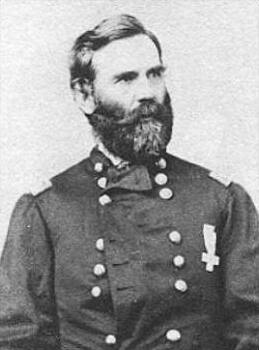
George Washington Getty was a career military officer in the United States Army, most noted for his role as a division commander in the Army of the Potomac during the final full year of the American Civil War.

Frederick Steele was a career military officer in the United States Army, serving in the Mexican-American War, the Yuma War, and as a major general in the Union Army during the American Civil War. He was most noted for retaking much of secessionist Arkansas for the Union cause, escaping the besieged port-city of Camden through successful deception tactics, and defeating Sterling Price and E. Kirby Smith at Jenkins Ferry.
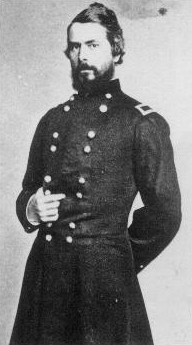
Truman Seymour was a career soldier and an accomplished painter. He served in the Union Army during the American Civil War, rising to the rank of major general. He was present at the Battle of Fort Sumter. He commanded the Union troops at the Battle of Olustee, the only major Civil War battle fought in Florida.

Thomas Casimer Devin was a United States Army officer and general. He commanded Union cavalry during the American Civil War and during the Indian Wars.

Innis Newton Palmer was a career officer in the United States Army, serving in the Mexican–American War, the Civil War, and on the Western frontier.
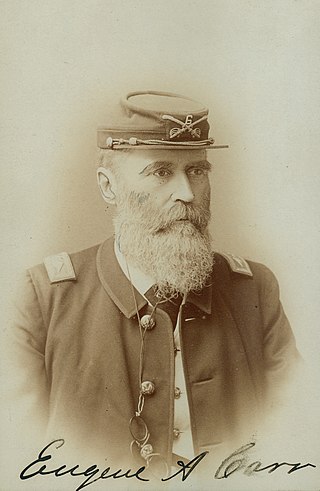
Eugene Asa Niel Carr was a soldier in the United States Army and a general in the Union Army during the American Civil War. He was awarded the Medal of Honor for his actions at the Battle of Pea Ridge.

Eli Long was a general in the Union Army during the American Civil War.
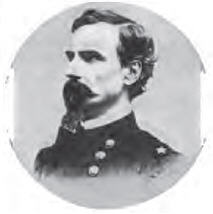
John Wynn Davidson was a brigadier general in the United States Army during the American Civil War and an American Indian fighter. In 1850, he co-led the Bloody Island massacre of 60-200 Pomo old men, women, and children as part of the wider California genocide.

Absalom Baird was a career United States Army officer who distinguished himself as a Union Army general in the American Civil War. Baird received the Medal of Honor for his military actions.

Kenner Garrard was a brigadier general in the Union Army during the American Civil War. A member of one of Ohio's most prominent military families, he performed well at the Battle of Gettysburg, and then led a cavalry division in the army of Major General William T. Sherman during the Atlanta Campaign. He developed a reputation for personal bravery and was cited for gallantry at the Battle of Nashville as an infantry division commander.

The general officers of the Confederate States Army (CSA) were the senior military leaders of the Confederate States of America during the American Civil War of 1861–1865. They were often former officers from the United States Army before the Civil War, while others were given the rank based on merit or when necessity demanded. Most Confederate generals needed confirmation from the Confederate States Congress, much like prospective generals in the modern U.S. armed forces.
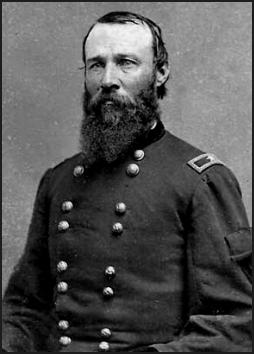
Washington Lafayette Elliott was a brigadier general in the Union Army during the American Civil War. He led a division of IV Corps at the Battle of Nashville in 1864. In 1866, he was awarded the honorary grade of brevet major general, U.S. Army.
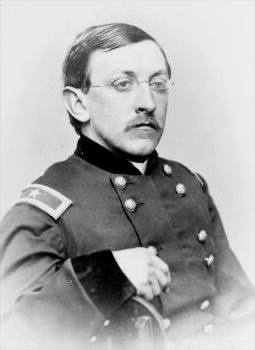
George Henry Chapman was an American sailor, newspaper editor, lawyer, and soldier. He served in the United States Navy during the Mexican–American War and as a Union Army general during the American Civil War. Later in life he was a judge and a state legislator.
Robert Huston Carnahan was a grain merchant before the American Civil War and a mine superintendent after the war. He was a Union Army officer during the Civil War. He was appointed a captain of the 3rd Regiment Illinois Volunteer Cavalry on August 24, 1861, lieutenant colonel on September 20, 1864, and colonel on April 9, 1865.
